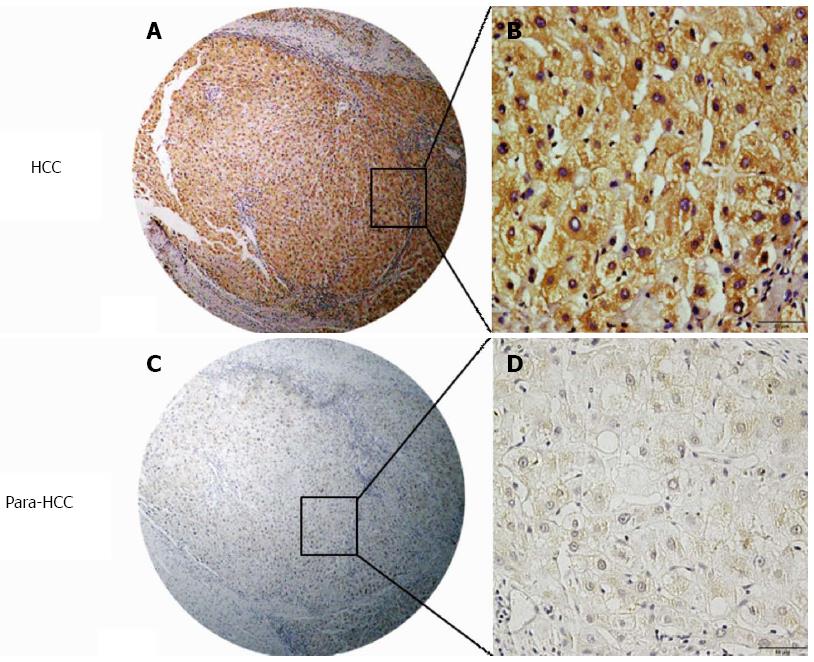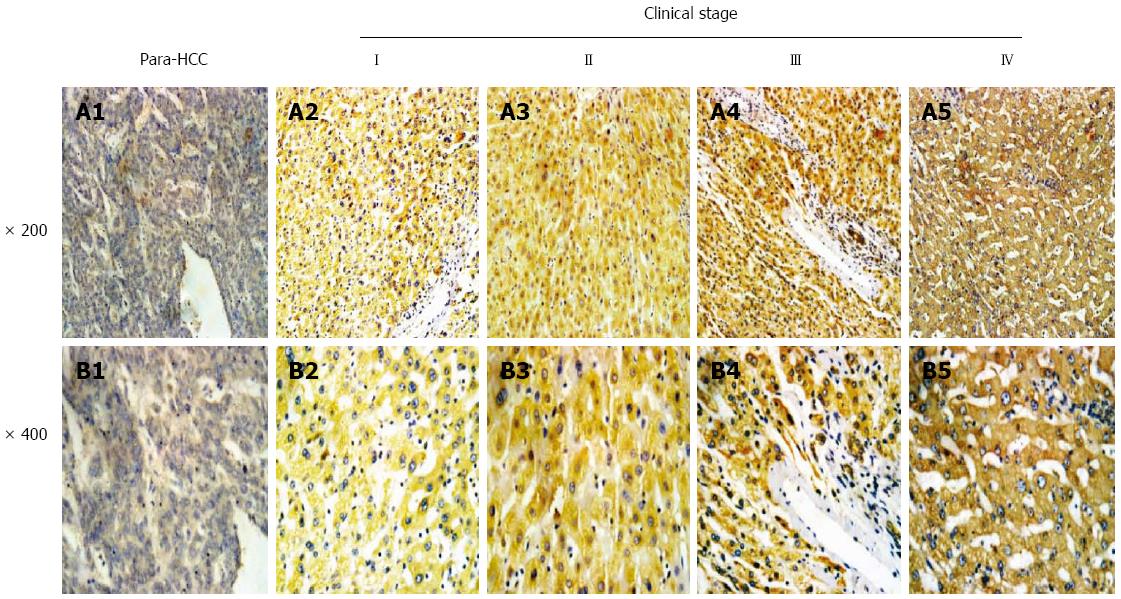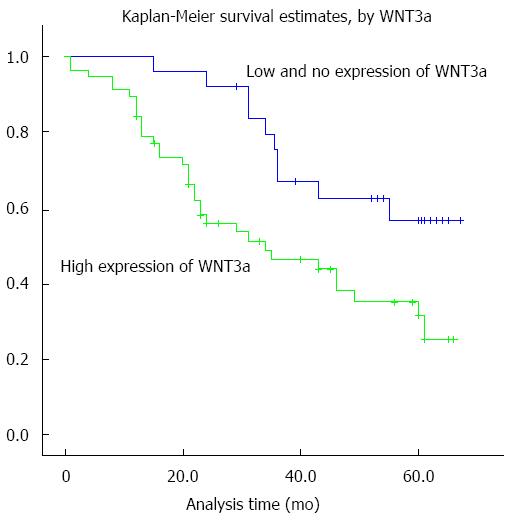Copyright
©The Author(s) 2016.
World J Gastroenterol. Apr 14, 2016; 22(14): 3829-3836
Published online Apr 14, 2016. doi: 10.3748/wjg.v22.i14.3829
Published online Apr 14, 2016. doi: 10.3748/wjg.v22.i14.3829
Figure 1 Analysis of hepatic Wnt3a expression and its cellular distribution by immunohistochemistry.
The expression of hepatic Wnt3a was analyzed on tissue microarrays by immunohistochemistry with the primary mouse anti-human Wnt3a antibody. The positive Wnt3a expression with brown staining particles was distributed in the cytosol and membrane of hepatocytes and only a few cell nuclei. A and B: Strong straining of Wnt3a in hepatocellular carcinoma (HCC) tissues; C and D: Light staining of Wnt3a in surrounding tissue. A and C: Original magnification × 400; B and D: Original magnification × 400.
Figure 2 Expression of hepatic Wnt3a at different hepatocellular carcinoma stages.
A1 and B1: Low or no Wnt3a expression in the para-cancerous tissues. A2-A5 and B2-B5: The brown staining of Wnt3a gradually increases in cancerous tissues from stage I to IV. A1-A5: Original magnification × 200; B1-B5: Original magnification × 400.
Figure 3 Overall survival curves of 80 hepatocellular carcinoma patients.
The Wnt3a expression curves were calculated by the Kaplan-Meier method. Survival curves of 80 hepatocellular carcinoma patients were made according to cancerous tissues expressing a low or high level of Wnt3a (log-rank test, P < 0.001). The green line is the high Wnt3a group; and the blue line is the low or without Wnt3a group.
- Citation: Pan LH, Yao M, Cai Y, Gu JJ, Yang XL, Wang L, Yao DF. Oncogenic Wnt3a expression as an estimable prognostic marker for hepatocellular carcinoma. World J Gastroenterol 2016; 22(14): 3829-3836
- URL: https://www.wjgnet.com/1007-9327/full/v22/i14/3829.htm
- DOI: https://dx.doi.org/10.3748/wjg.v22.i14.3829











